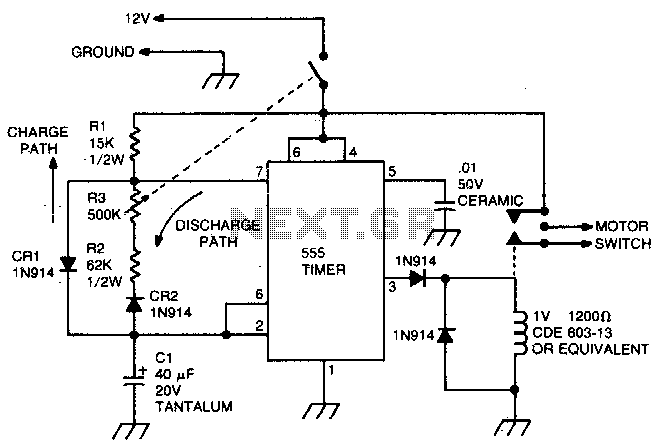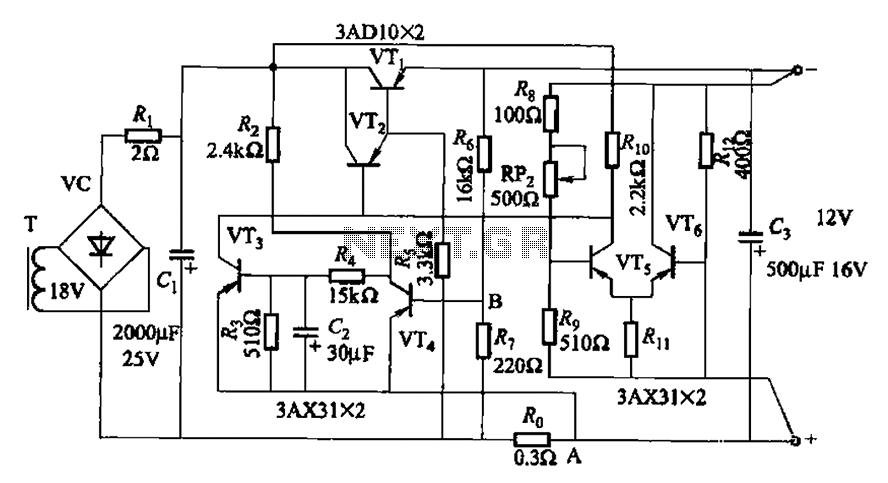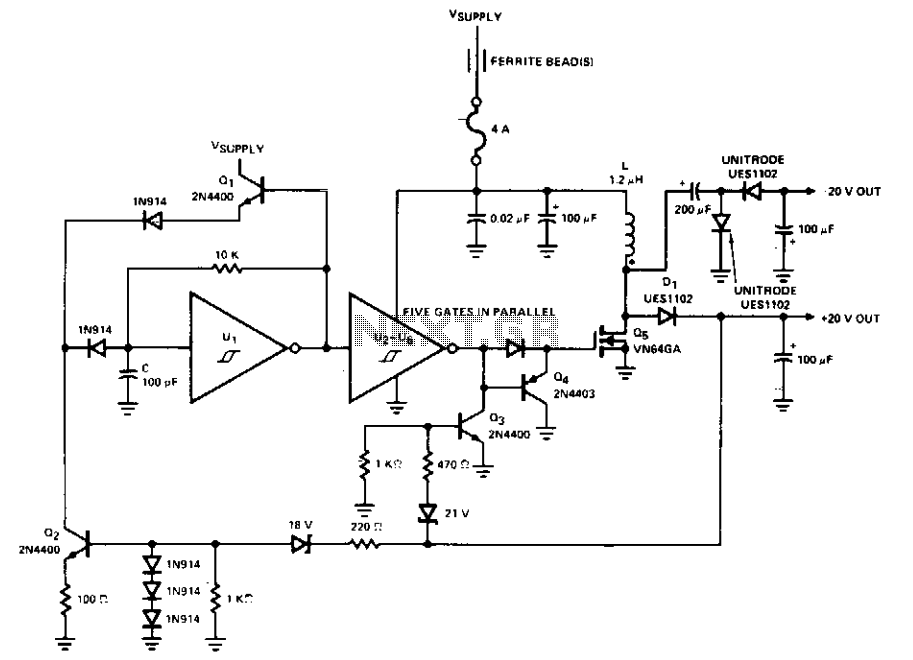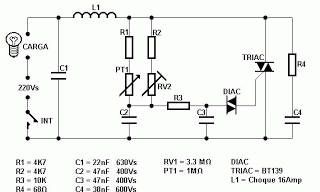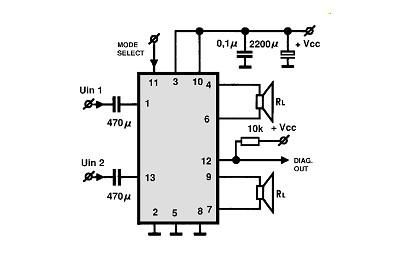
6m wireless remote control switch circuit
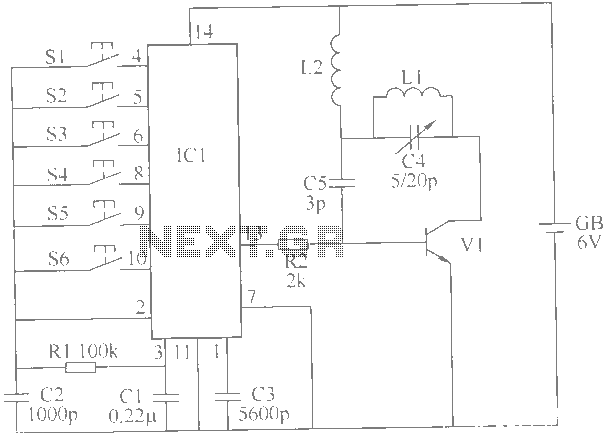
This example describes a wireless remote control switch featuring reliable operation and practical characteristics, capable of remotely controlling a 6-channel device within a 6-meter range for household electricity. The wireless remote control switch circuit consists of a wireless transmitter and a wireless receiver circuit. The encoding is performed by a wireless transmitter integrated circuit (IC1), with control buttons labeled S1 to S6, along with a transistor (V1), resistors (R1, R2), inductors (L1, L2), and capacitors (C1 to C5), powered by a battery (GB), as illustrated in the accompanying figure.
The wireless remote control switch is designed to facilitate the operation of multiple electrical devices from a distance, enhancing convenience and functionality in a household setting. The wireless transmitter section utilizes an integrated circuit (IC1) to encode signals from the control buttons (S1 to S6). Each button corresponds to a specific channel, allowing the user to selectively activate or deactivate connected devices.
The transmitter circuit includes a power supply unit, typically a battery (GB), which powers the entire system. Resistors (R1, R2) are employed for current limiting and voltage division, ensuring that the circuit operates within safe parameters. The inductors (L1, L2) may be used for filtering or tuning purposes, optimizing the signal transmission and reception.
The receiver circuit, which is not detailed in the initial description, is equally important as it decodes the signals sent from the transmitter. Upon receiving a signal, the receiver activates the corresponding output channel, which may be connected to a relay or a solid-state switch, allowing the control of high-voltage devices safely.
The operational range of 6 meters is typical for such wireless systems, achieved through careful selection of components and circuit design. The overall architecture of the wireless remote control switch circuit is compact and efficient, making it suitable for various applications around the home, such as controlling lights, fans, or other electrical appliances. The simplicity of the design ensures ease of use and installation, making it accessible for both amateur and professional electronics enthusiasts.This example describes a wireless remote control switch, with reliable operation, simple and practical features, can remote control 6-channel device in the 6m range of household electricity. The wireless remote control switch circuit by the wireless transmitter and wireless receiver circuit control circuit. Encoded by a wireless transmitter integrated circuit IC1, the control button S1 ~ S6, the transistor V1, resistors R1, R2, inductors L1, L2, and capacitors C1 ~ C5 battery GB, as shown in Fig.
The wireless remote control switch is designed to facilitate the operation of multiple electrical devices from a distance, enhancing convenience and functionality in a household setting. The wireless transmitter section utilizes an integrated circuit (IC1) to encode signals from the control buttons (S1 to S6). Each button corresponds to a specific channel, allowing the user to selectively activate or deactivate connected devices.
The transmitter circuit includes a power supply unit, typically a battery (GB), which powers the entire system. Resistors (R1, R2) are employed for current limiting and voltage division, ensuring that the circuit operates within safe parameters. The inductors (L1, L2) may be used for filtering or tuning purposes, optimizing the signal transmission and reception.
The receiver circuit, which is not detailed in the initial description, is equally important as it decodes the signals sent from the transmitter. Upon receiving a signal, the receiver activates the corresponding output channel, which may be connected to a relay or a solid-state switch, allowing the control of high-voltage devices safely.
The operational range of 6 meters is typical for such wireless systems, achieved through careful selection of components and circuit design. The overall architecture of the wireless remote control switch circuit is compact and efficient, making it suitable for various applications around the home, such as controlling lights, fans, or other electrical appliances. The simplicity of the design ensures ease of use and installation, making it accessible for both amateur and professional electronics enthusiasts.This example describes a wireless remote control switch, with reliable operation, simple and practical features, can remote control 6-channel device in the 6m range of household electricity. The wireless remote control switch circuit by the wireless transmitter and wireless receiver circuit control circuit. Encoded by a wireless transmitter integrated circuit IC1, the control button S1 ~ S6, the transistor V1, resistors R1, R2, inductors L1, L2, and capacitors C1 ~ C5 battery GB, as shown in Fig.
